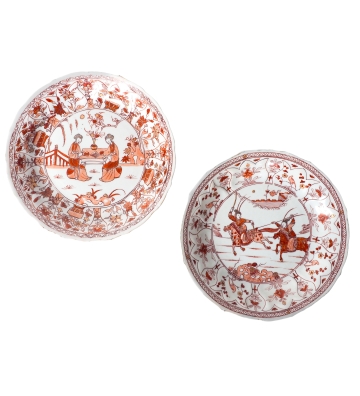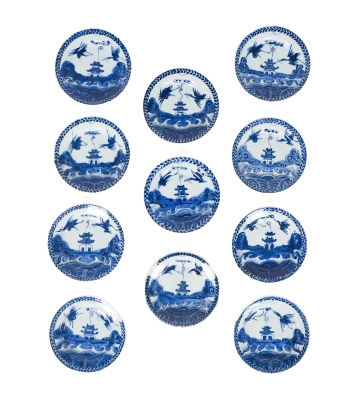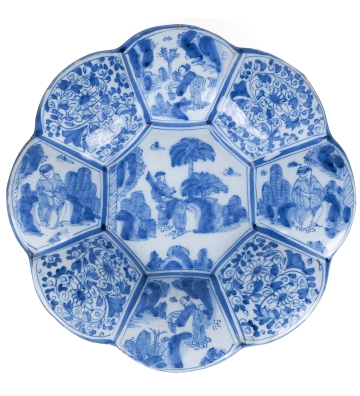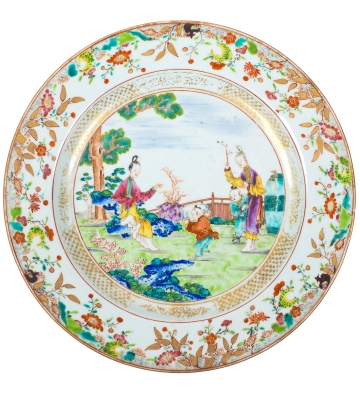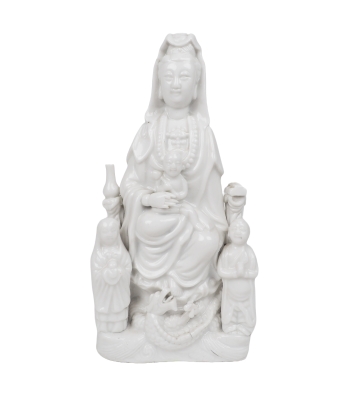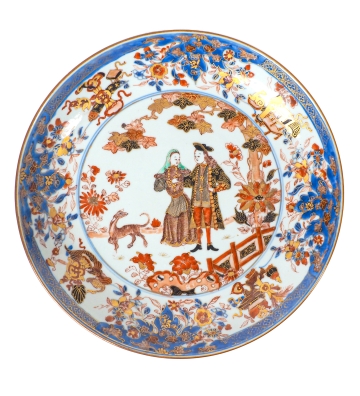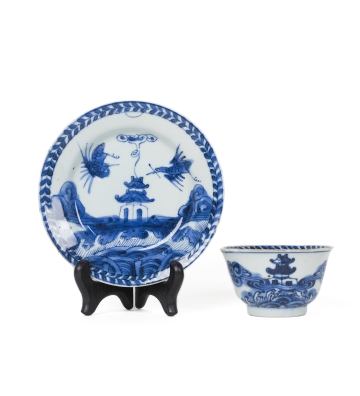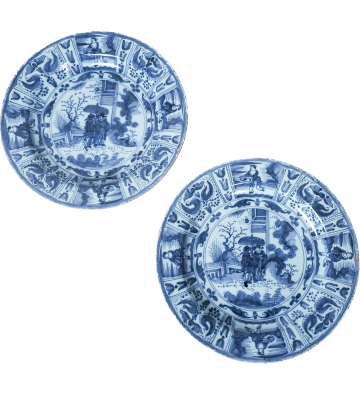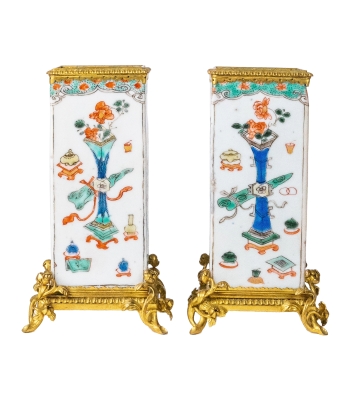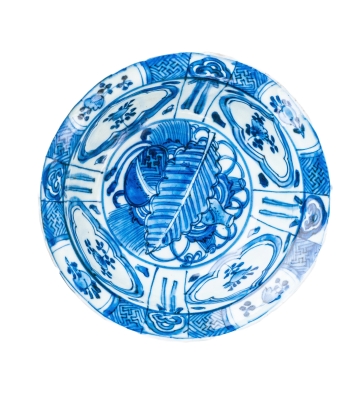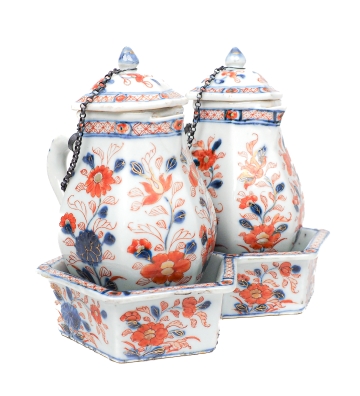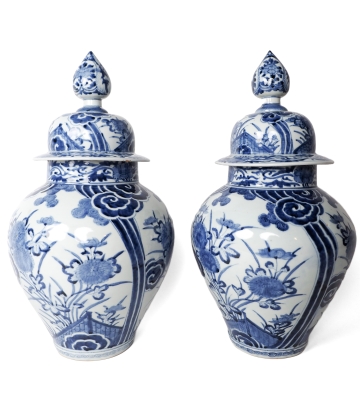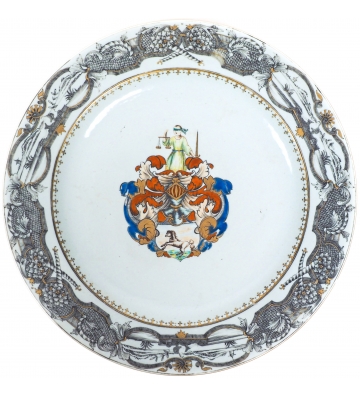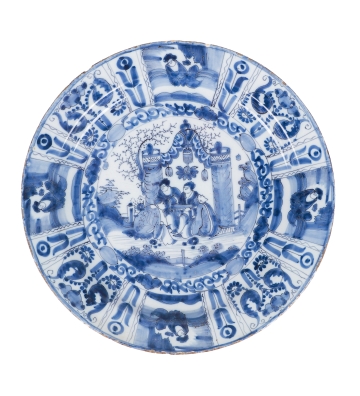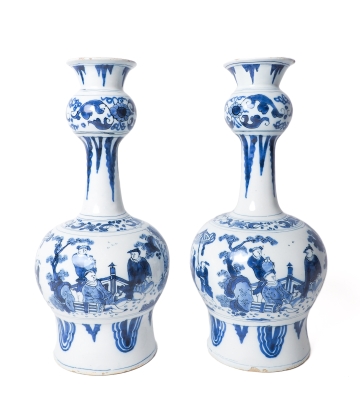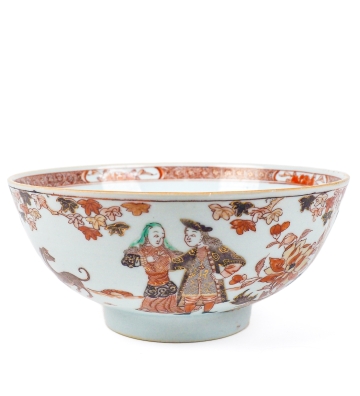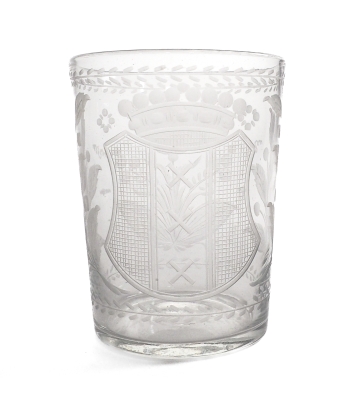One plate depicts female warriors on horses in a landscape and the other plate has Long Elizas sitting in a garden playing ‘Go’ on it. On the first plate, the two female warriors are characters from the 'Yang Jia Jiang: The Generals of the Yang Family’. This is a collection of Chinese folklore, plays and novels on a military family from the earlier years of imperial China's Song Dynasty (960–1279). The heroic stories are all about defending Imperial China. On the second plate we can see the ‘Go’ board. Go is a game for two players and is called ‘Wei-k'I’ or ‘Wei-chi’ in Chinese. Some sources say that it is the oldest board game still played today.
On both, the borders have modeled tulip motifs with its carved relief on the surface. The edges are scalloped and have traces of the gold decoration.
__________________________________________________________________________________________
Milk and blood in the early 18th century
By T.M. (Toussaint) Verkoulen
During the Kangxi period, a particular type of export porcelain adorned with red and gold overglaze which was known in the Netherlands as ‘melk en bloed’, or ‘milk and blood’. The name was invented later in the 19th century, because of the deep iron-red color in contrast with the white clay (kaolin) and glaze. This type of porcelain was quite popular and widely used in especially The Netherlands. Authors and collectors suggest that the milk and blood decorated porcelain have been produced explicitly for the northern Dutch provinces Groningen and Friesland. The reasoning behind this tailored production could be linked to cultural differences in Dutch regions. The northern regions adhered to a Calvinistic approach that appreciated simplicity and modesty, yet this red and gold porcelain boasted a lavish and refined appearance, signifying luxury. This contradiction likely attracted the inhabitants of the area, making this style of porcelain uniquely sought after in Groningen and Friesland. Nevertheless, it is also found in former collections of German princes and nowadays also in France where they call the porcelain ‘fer rouge’.
At the time this porcelain was produced, between 1700 and 1730, there already was a significant lower production number compared to the blue and white, famille rose or famillie verte porcelain. It is said that the purchase (and production) of this type of porcelain was too expensive, as a result of which the Dutch East India Company abandoned the import of the goods because the profit margin was too low. Another reason of the short production can be a change in the taste of the Dutch. Blue and white was already very popular and more spread because of the production of Delfts blue. Thereby, red decoration on porcelain was already produced around 1640 in Japan (Arita). The correct name of the overglazed red pigment on Imari decoration is ‘akae’ (red painting). Most of the milk and blood porcelain is still described as Kangxi-period (1661-1722), however the tulip decoration on the outsides is a typical Yongzheng (1722-1735) element.
Source: D. Suebsman, “Melk en Bloed: Exquisite porcelain from the Middle Kingdom”, 2019.
Jan-Erik Nilsson.

